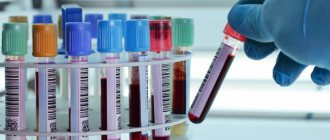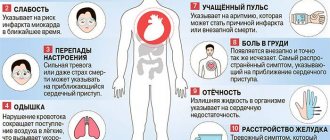- August 3, 2018
- Endocrinology
- Max Fry
Diabetes mellitus is a disease that affects a large number of people. According to statistics, about 5% of the population of all developed countries have this disease, and every year the number of victims is growing. It is worth noting that this disease in most cases cannot be treated. And mortality from diabetes ranks third after cancer and cardiovascular diseases. The statistics do not inspire peace of mind at all, because no one is immune from this disease. How does diabetes manifest itself? We will answer this question in the article.
Concept
It is necessary to first understand what this term means. Diabetes mellitus according to ICD-10 is assigned codes in the range E10-E14 depending on the type of illness. This disease is a disorder in the body's metabolism. In other words, carbohydrates and water are not processed properly due to problems in the pancreas. This organ is responsible for producing insulin, which in turn must convert sugar into glucose. Due to the fact that this substance is not produced, sugar accumulates in the body and is excreted only through urine, and in large quantities.
How does diabetes manifest itself? The main symptom of the disease is an increased amount of sugar in the blood. In order for this indicator to be normal, it is necessary to produce insulin using the pancreas. However, due to disturbances, the substance is not produced, as a result of which the cells suffer from a lack of glucose.
Types of diabetes
There are several types of diabetes:
- gestational;
- neonatal;
- 1 form;
- 2 form.
How to determine the type of diabetes? The gestational form of pathology develops during pregnancy. When a woman’s body does not produce enough insulin during pregnancy due to hormonal changes, this leads to an increase in glucose levels. Often this moment is recorded during the 2nd trimester and disappears after the birth of the baby.
The neonatal form is a rare occurrence, caused by a change in genetic history that affects the production of sugar.
types of diabetes
The first type is insulin dependent. The diabetic's immune system begins to destroy the cells of the pancreas. All the glucose draws cellular water into the bloodstream, causing dehydration. Without treatment, the patient experiences a comatose state, which often leads to death.
The second type of disease is insulin-independent. How to identify type 2 diabetes.
- The patient experiences a decrease in the sensitivity of receptors to sugar, despite its normal production.
- After some time, hormone productivity and energy levels decrease.
- Protein synthesis changes, and increased fat oxidation is observed.
- Ketone bodies accumulate in the bloodstream.
The reason for the decrease in sensation is age-related or pathological; the number of receptors also decreases.
Types of illness
Most often, there are two forms of the disease: type 1 and type 2 diabetes. The first of them is considered the most dangerous. It is in this case that coma is possible with diabetes. This can happen because the body produces antibodies that destroy pancreatic cells. Type 1 disease is lifelong, and to maintain the normal state of the body it is necessary to regularly inject insulin intramuscularly. Moreover, this substance cannot be taken as tablets, since it is not absorbed. Insulin should be administered during meals. It is worth noting that many people suffering from diabetes crave sweets. However, this is contraindicated; you must adhere to a strict diet. According to the ICD, type 1 diabetes mellitus is assigned code E10.
Type 2 diabetes is characterized by the fact that the body produces insulin, but not in such quantities as needed. Here everything is a little more complicated: the disease behaves secretly. How does type 2 diabetes manifest? It is usually detected during a routine urine or blood test. Symptoms can range from extreme thirst to weight loss. In obese people, weight loss is almost unnoticeable, however, if a disease is detected, it is better not to tempt fate, but to immediately consult a specialist for advice.
The first symptoms of diabetes mellitus: characteristics of each type and diagnosis of the disease
The disease occurs differently in a child, in a female and a male body. The first and main signs of diabetes mellitus in men are disruptions in sexual function, which is caused by a problem with blood access to the pelvic organs, as well as the presence of ketone bodies that suppress the production of testosterone. In women, the main reason is difficulties with the secretion of insulin by the pancreas.
It is also worth saying that females can develop diabetes due to pregnancy, vaginal infections, and irregular cycles. As for children, the nature of diabetes in their case is based on the increased need of the child’s body for sweets and an increased desire to eat.
Signs of different types of diabetes
The most common types are disease types 1, 2 and gestational. The first signs that develop from type 1 diabetes are a sharp decrease in body weight, while appetite remains increased. It often occurs in young people under 30 years of age. You can also determine that a person is sick by the smell of acetone, which is present in urine and exhaled air. The reason for this is the formation of a large number of ketone bodies.
The onset of the disease will be brighter the earlier it manifests itself. Complaints are of a sudden nature, the condition progresses for the worse almost instantly. Consequently, the disease practically never goes unrecognized. Type 2 diabetes is a disease affecting people over 40 and is more common in overweight women.
The cause of development may be failure to recognize insulin by its own tissues. Among the early signs is hypoglycemia, that is, the level of sugar decreases. Then trembling in the hands, excessive heartbeat, hunger, and increased blood pressure begin.
What to do at the first signs of diabetes
When signs of diabetes appear on your face, you must, first of all, visit a specialist. Perhaps this is not a “sweet” disease at all, because there are variants of pathologies with similar symptoms, for example, diabetes insipidus or hyperparathyroidism. Only a doctor, prescribing an examination, can accurately diagnose and find out the cause and type of the disease. It is important to understand that the sooner treatment is started, the better.
You should know!
A patient who has discovered signs of diabetes must monitor their blood sugar levels; special express testers are used for this.
Signs of diabetes associated with damage to organs and systems
In particular, type 2 diabetes is difficult to recognize; in this episode, the first signs of diabetes are absent. Patients have no complaints, or they are ones that are simply not paid attention to. Then ignoring the problem can cause damage to tissues and organs.
The disease can be suspected by the following formations:
- Symmetrical alignment of the nerves of the legs, hands, and feet. With this option, a person feels numbness and coldness in the fingers, “goose bumps,” and muscle cramps.
- Diabetic foot syndrome, which is determined by long-term healing of wounds, ulcers, cracks in the lower extremities. This manifestation can lead to gangrene and subsequent amputation.
- Decreased vision, namely the development of cataracts, as well as damage to the vessels of the fundus.
- Decreased immunity. Here you can find long-healing scratches, persistent infectious diseases, and complications after illness. For example, a common cold can develop into pneumonia. Also, due to immunodeficiency, fungal diseases of the nail plate, skin, and mucous membranes can occur.
Diagnostic methods
The disease can be diagnosed by recognizing the first signs of diabetes. In addition to a standard blood test to detect glucose levels, complex laboratory tests are carried out. The first is anamnesis; 50% of a successful diagnosis depends on its correct collection. The second is the patient’s own complaints: fatigue, thirst, headaches, appetite, changes in body weight, etc.
Laboratory methods are:
- Blood for glucose detection. The analysis is taken on an empty stomach in the morning. When the rate is more than 6.1 mmol/l, there is a violation of the body’s sensitivity to glucose.
- Blood 2 hours after eating food. If venous blood contains more than 10.0 mmol/l, and capillary blood contains 11.1 mmol/l or more, then this symptom is considered dangerous.
- Glucose tolerance testing. It should be carried out after the patient has fasted for 10-14 hours. The patient drinks 75 g of glucose diluted in water, and its level is determined after 60-120 minutes. If the reading is less than 7.8 mmol/l, then everything is fine.
- Urine for detection of glucose and ketone bodies. If ketone bodies are noticed, then ketoacidosis develops; if time and treatment are missed, it can lead to coma and then death.
- Determination of glycosylated hemoglobin in blood. The risk exists when the HbA1c value is above 6.5%.
- Detection of insulin C-peptide and blood.
Causes of diabetes
Diabetes mellitus is characterized by a lack of such an important substance as insulin in the body. Deficiency may occur due to several factors. Let's look at the main causes of diabetes:
- Heredity. To cope with this, you need to get rid of other factors and hope for the best.
- Obesity. Most often, people who are overweight suffer from diabetes, and this should be combated.
- Diseases of the pancreas. Diseases such as pancreatitis, pancreatic cancer and others contribute to damage to beta cells, which are responsible for producing insulin.
- Viruses. Smallpox, influenza and rubella are especially dangerous. If a person becomes the object of infection, then he is likely to develop insulin-dependent diabetes (mellitus).
- Stress. People who are at risk should avoid nervous disorders, as this can become an activator of the disease.
- Age. According to statistics, older people are at greatest risk of getting sick.
The above reasons do not include secondary diseases, in which diabetes is only a symptom of a serious illness.
Diabetes and obesity
Scientists have identified a relationship between diabetes and excessive excess weight. On the one hand, insulin prevents the breakdown of fat, which makes weight loss almost impossible for a diabetic. On the other hand, obesity complicates the course of the disease:
Visceral (intra-abdominal) obesity can be the result of a sedentary lifestyle, excess androgens (male hormones), and can also be inherited. According to the standards of the World Organization of Gastroenterology, it is diagnosed when the waist circumference is more than 80 cm in women and more than 94 cm in men. The US National Cholesterol Education Program also focuses on the waist-to-hip ratio - more than 0.85 in women and more than 0.9 in men.
Symptoms of the disease
It is worth noting that diabetes develops gradually, slowly. There are practically no cases when the disease takes a critical form at lightning speed. How does diabetes manifest itself? At the initial stage, the patient exhibits the following symptoms:
- Dry mouth.
- A constant feeling of thirst that cannot be quenched. Diabetic patients easily drink several liters a day and cannot get enough water.
- In accordance with the previous point, daily urine output increases.
- Dry skin and persistent itching.
- Chronic fatigue syndrome in diabetes.
All these symptoms directly indicate problems in the body. As soon as you notice the first signs, you should immediately consult a doctor.
But that’s not all, because as soon as the disease begins to progress, complications may appear. Let's look at the main ones:
- Vision problems.
- Headache and nervous breakdowns.
- Numbness of the lower extremities, which leads to disturbances in normal walking.
- The appearance of pustules that do not heal.
- Leg ulcers due to diabetes.
- Impaired consciousness.
If the patient notices these changes, this indicates the insufficiency of treatment and the progression of the disease.
When to suspect a disease
The first symptoms of incipient diabetes and increased sugar levels can appear at any age. But for children and young people the first type is more typical, and for the elderly and obese patients - type 2.
Common early signs of the onset of diabetes are associated with increased blood glucose levels. It has the property of retaining water, so the main symptoms are unquenchable thirst and polyuria.
The patient is bothered by constant dry mouth. Some people associate thirst with hot weather and eating salty foods.
Drinking liquid is intensively excreted by the kidneys. When the glucose concentration increases above 10 mmol/l, it begins to be excreted in the urine and carries with it a lot of water.
The first signs of the disease may be accompanied by a constant feeling of fatigue and general weakness. The cells of the body experience energy starvation, this stimulates increased appetite, a special passion for carbohydrates and sweets.
If such symptoms and signs appear, you need to diagnose diabetes and determine your sugar level. A glucose tolerance test helps identify initial changes.
In children, the onset of the disease can be subtle or acute. They are often delivered unconscious by ambulance with various diagnoses, and only in a hospital setting is diabetes confirmed. It is more difficult to recognize pathology at the beginning of development in a child. Initially, like adults, they are thirsty, they drink and urinate a lot. Against this background, night or daytime urinary incontinence may develop. Fatigue, weakness, weight loss with a good appetite appear later. Skin itching and other dermatological manifestations are not typical.
Advanced manifestations of pathology
The disease is progressing. The initial stage of diabetes mellitus is complemented by new symptoms. Constant loss of fluid leads to dehydration. The skin becomes dry and flabby, its elasticity decreases, and lips constantly dry out.
Type 1 diabetes is accompanied by weight loss, despite a good appetite. This is due to a lack of insulin. Glucose does not penetrate cells on its own, so alternative substances are included in metabolism to obtain energy: lipids and proteins. The same mechanism explains why the first symptoms of diabetes include the smell of acetone on the breath. It appears as a result of the breakdown of fatty acids and fats to the formation of ketone bodies.
The manifestation of type 2 diabetes is excess weight gain. Insulin has an anabolic effect. A disease of this type is accompanied by an increased level of a hormone that cannot transport glucose into cells, but has an effect on metabolism. Increased appetite accelerates weight gain. With diabetes, a person consumes large amounts of food and does not get enough.
Diabetes mellitus is primarily manifested by elevated blood sugar levels!
Lack of nutrition, dehydration, and the metabolism of adipose tissue with the formation of toxic ketone bodies negatively affect the brain. Diabetes mellitus is characterized by neurological symptoms:
- Irritability.
- Frequent mood changes.
- Chronic fatigue and fatigue.
- Decreased attention and memory.
Skin manifestations become a sign of diabetes mellitus in the initial stages. The concern is increased dryness, which is also a consequence of dehydration. This condition is accompanied by itchy skin. The sensations appear in the armpits, on the feet, palms, and abdomen and cannot be relieved by anything. Nails become brittle and hair falls out. These are signs of diabetes associated with metabolic disorders.
After the development of diabetes mellitus, tissue trophism is disrupted. Small wounds on the skin take a long time to heal, often become inflamed and become infected. Overall resistance to disease decreases. Skin manifestations may be of the following types:
- Furunculosis.
- Candidiasis of skin folds.
- Neurodermatitis.
- Dermatoses.
Skin symptoms of diabetes such as dermatoses can be primary, which appear directly from metabolic changes. These include:
- Xanthomatosis.
- Necrobiosis.
- Diabetic blisters.
Skin problems are considered secondary after the addition of a fungal or microbial infection. This also includes skin lesions after insulin injections and allergic reactions to medications.
Clinical manifestations of diabetes mellitus caused by a decrease in immune status are a fungal infection of the skin and mucous membranes.
In obese and elderly people, thrush often affects the folds of the skin. In the photo, external signs look like red, delimited spots with a white coating. The edge may peel off, and in advanced cases, erosions occur on the surface of the lesion.
Signs of diabetes mellitus in women are vaginal candidiasis. Serious immune disorders do not allow you to completely get rid of the infection; it occurs in a chronic form with frequent exacerbations. Fungal infection can appear in the oral cavity. Symptoms of diabetes include stomatitis and periodontal disease. A decrease in the protective reactions of saliva leads to the proliferation of opportunistic flora of the oral cavity.
The first signs of a significant increase in glucose in a diabetic may appear in the form of blurred vision. A cloudy veil appears in the eyes, visual acuity decreases, which goes away after the sugar level stabilizes.
Stages of development of diabetes mellitus
Medical experts distinguish several degrees of severity of diabetes. This depends on the form and progression of the disease. Of course, the higher the blood sugar level, the faster the disease develops.
So, there are currently 4 stages of diabetes progression:
- First degree. It is characterized by a favorable course of the disease. Here the patient is not threatened with complications, the disease proceeds calmly. The blood glucose level is only slightly higher than normal; first-degree diabetes has virtually no effect on health. It is only necessary to maintain this state.
- Second degree. This is a more serious disease, characterized by the appearance of the first complications. The patient may experience problems with vision, kidneys, heart and nervous system. There are no serious disorders, the glucose level exceeds the permissible level slightly.
- Third degree. If the patient has started diabetes, then unpleasant news awaits him. In this case, the disease will constantly progress, and it will be almost impossible to carry out drug control. The glucose level is almost twice the permissible level. The person feels unwell, his vision deteriorates greatly, his blood pressure is constantly high, his lower limbs become numb and very painful, and severe complications are possible.
- Fourth degree. The most recent and, accordingly, severe form of the disease. In this case, correction is not possible. Any means are powerless here, the level of glucose in the blood reaches unrealistic values, gangrene and liver failure develop. Leg ulcers in stage 4 diabetes are common.
Signs of diabetes in men and children
Men get sick less often than women, but the disease itself is more severe.
Diabetes mellitus is characterized by:
- erectile disfunction;
- problems with ejaculation;
- excessive sweating;
- sudden weight loss or weight gain not related to nutrition and sports;
- rapid loss of hair on the head;
- skin itching;
- dry skin.
Also, common symptoms of diabetes in men are thirst, frequent urge to urinate, and a strong acetone odor.
In addition to general symptoms, there are a number of signs for the early diagnosis of diabetes in children:
- bowel disorders (constipation or, conversely, frequent diarrhea);
- nausea and vomiting without other signs of food poisoning or viral infection;
- headache;
- thrush in girls;
- mental imbalance, expressed in frequent mood swings.
Dangerous symptoms of diabetes mellitus in a child, requiring an immediate call to an ambulance:
- incessant vomiting;
- smell of acetone;
- breathing problems;
- heart rhythm disturbance;
- pale skin;
- lethargy, loss of consciousness.
It happens that after eating a child becomes lethargic and feels unwell. This may also signal illness.
The symptom appears due to carbohydrates, which provoke an increase in blood glucose levels.
After some time, the condition is compensated, and the child feels well again, exactly until the next meal.
Note! If a child was previously indifferent to sweets, but now has become seemingly dependent on sugar, this may also be a sign of diabetes.
Diagnostics
First, you need to understand which doctor to contact if you have such a problem. These issues are mainly dealt with by an endocrinologist, but a therapist can also make a diagnosis. In any case, to determine the disease, you need to conduct an external examination. Based on this, the doctor has his first guesses, which are confirmed or refuted as a result of the patient undergoing various procedures and examinations.
To make a diagnosis of diabetes mellitus, you need to do the following:
- Determine blood glucose levels. It is worth noting that the normal value ranges from 3.3-5.5 mmol/l.
- Determine glucose in urine.
- Take a blood test that will show the content of glycated hemoglobin.
- It is necessary to determine immunoreactive insulin, i.e. find out what its content is in the blood.
- Determine kidney disorders by passing urine for analysis.
- Perform an eye examination to identify problems with the retina.
However, these procedures do not always clearly answer the question of what disease the patient has. In this case, the specialist prescribes additional tests such as a glucose tolerance test. Based on all of the above procedures, the doctor can diagnose diabetes.
Treatment of the disease
Insulin-dependent diabetes is no joke, and this disease should be taken seriously. So, at the first symptoms you can’t wait, you should immediately contact a specialist. The doctor will carry out the necessary medical measures to identify the disease, and then prescribe a course of therapy. It is worth immediately noting that treatment should be comprehensive and cover as many aspects of the disease as possible. You should listen to the recommendations for diabetes given by a specialist. This will help you quickly cope with the unpleasant manifestations of the disease.
If a person is diagnosed with type 1 disease, then insulin cannot be avoided. The doctor prescribes the dose individually.
When a patient has type 2 diabetes, specialists are limited to prescribing medications and diet. We'll talk about proper diet below. If a severe degree of the disease is observed, then insulin administration is also indispensable.
Unfortunately, it is impossible to cure diabetes completely, but if you maintain normal glucose levels, the patient will experience virtually no health problems. Doctors often recommend visiting a sanatorium for diabetes.
Therapy using folk remedies
As already noted, the main ways to maintain glucose levels are diet and medication. However, no one has canceled restoration using folk remedies. It is worth noting that their use can also be harmful, so before using any drugs it is better to consult an endocrinologist. Let's consider the most popular methods of traditional treatment of diabetes:
- Clover infusion. To prepare it, you need to combine a small amount of clover with the same amount of boiling water. After three hours, the drink is ready. It should be taken before meals, 300 ml.
- Blueberry leaves. The cooking method is almost the same, except for the ratio of ingredients. Pour a cup of boiling water over a spoonful of leaves and leave for half an hour. Take one cup orally three times a day.
- Burdock roots. They should be eaten with cheese, both boiled and fried. Sometimes people add this plant to soup instead of potatoes.
Proper diet
There is no universal diet that will suit all patients with diabetes. The diet is compiled individually depending on weight, age, physical development. They also take into account the fact that the patient needs to lose weight or gain weight. What do you eat if you have diabetes? We will try to answer this question. The purpose of the diet is to maintain blood sugar levels so that they do not go beyond acceptable limits. In addition, you should maintain a balance of fats and cholesterol in the body.
The diet is aimed at stabilizing the functioning of the pancreas; food should contain the required amount of proteins, carbohydrates and vitamins. The diet must be designed so that it provides the body with enough energy, which will help a person get closer to his ideal weight.
It is necessary to understand that diet is the basis of diabetes treatment. If you ignore it and still administer insulin, the patient will begin to feel unwell and the treatment will not be effective. To avoid this, you should organize the correct nutritional plan, with which you can normalize blood glucose levels.
So, what do you eat if you have diabetes? Almost every supermarket that sells food has a special section designed for people suffering from this disease. A diabetic's diet should include lean fish, dietary meat, various cereals, vegetables and herbs, soups, and dairy products. Of course, all people want sweets, but you need to understand that with this illness this is prohibited. After all, blood sugar levels increase, which will lead to complications. However, there are special dietary products for diabetics.
Little-Known Symptoms of Diabetes
Complaints of thirst, increased urination and weight loss are frequent accompaniments of diabetes and immediately lead the doctor to suspect a serious illness. However, there are also little-known signs of diabetes, which, however, can help to suspect this diagnosis and allow timely treatment. Even at home, you can determine the risk of diabetes by detecting symptoms such as:
- Increased fatigue and decreased performance, a periodic feeling of “loss of strength” can occur in any healthy person, however, prolonged fatigue, apathy and physical fatigue, not caused by physical overload or stress, and also not disappearing after rest, can be a sign of an endocrine disease, including including diabetes.
- Hyperkeratosis is thickening of the skin. The skin becomes rough, dull and loses its healthy appearance, thickening and flaking of the skin appears, and a tendency to cracks and calluses. The nail plates also suffer, the skin in the nail area thickens and becomes rough.
- Skin itching, as well as itching in the groin area. In addition to dermatological and infectious diseases, this kind of skin itching is often caused by diabetes mellitus.
- Hair loss. If your hair suddenly begins to fall out in large quantities, you should not ignore this symptom and try to solve it only with cosmetic methods; perhaps the reason lies in serious problems in the body, including the endocrine system.
- Gout. Despite the fact that this type of joint damage is considered as an independent disease, these two pathologies are often related to each other, as they have common cause-and-effect relationships. Both of these diseases are directly related to lifestyle disorders and obesity, so people with excess body weight are at risk for developing insulin resistance, gout and cardiovascular diseases.
- Infertility and menstrual irregularities, pathologies of pregnancy and fetus. The absence of pregnancy for a long time, as well as disturbances in the reproductive system, can be a sign of many diseases, however, if these problems are present, it would be a good idea to check your blood glucose levels.
- Disturbances in the functioning of the nervous system. Complaints such as insomnia, depression, irritability, decreased visual acuity should be a reason to consult a doctor to find out if you have diabetes.
- Decreased immunity. If you often have colds, fungal and bacterial infections, you do not recover for a long time from acute respiratory infections or they occur with complications, be sure to consult a doctor to find out the cause of immunodeficiency; perhaps the cause is high blood sugar.
By the way, we recommend reading the article What to do if your legs swell with diabetes?
Consequences of diabetes
In itself, this disease does not pose a danger to human life and health. But it’s really bad when complications arise. Consider the main consequences of this disease:
- Neuropathy. Diabetes can develop into this disease, which is characterized by burning, severe pain and numbness of the lower extremities. This process develops as a result of metabolic disorders in the nervous system. In this case, doctors recommend using medications containing thioctic acid. If you undergo a proper course of treatment, you can restore nerve tissue and get rid of complications.
- Coma with diabetes mellitus. The symptoms increase at a breakneck speed, and at one point the patient needs to be hospitalized. Usually the patient feels a darkening of consciousness and feels lethargic. There are several types of coma, the most popular is ketoacidotic. It is characterized by the accumulation of toxins that destroy nerve cells.
- Pain and trophic ulcers on the legs with diabetes. As for pain in the lower extremities, this indicates neuropathy. Sometimes patients feel a burning sensation in the foot or lower leg. The appearance of ulcers indicates the next stage of the disease. If you get rid of them in time, no further complications will be observed. However, otherwise, you can significantly complicate your life by fighting hematomas that will fester.
Prevention
It is worth noting that type 1 diabetes is very difficult to predict or predict. It is hereditary in nature, and is also influenced by viruses that “host” the body. Of course, not everyone gets diabetes, but it is impossible to predict whether the disease will affect you.
A completely different conversation about type 2 disease. Here everything depends on the person and his lifestyle. Bad habits, alcohol abuse and a sedentary lifestyle will take their toll. We've talked about how diabetes manifests itself, now it's time to look at preventative measures. Necessary:
- monitor your weight;
- control blood pressure;
- create a diet that includes dietary food with a minimum content of carbohydrates and fats;
- normalize physical activity.
If you follow these recommendations, you can protect yourself from diabetes. A healthy lifestyle and proper nutrition are the key to the normal functioning of human organs. You need to take care of your health, because this is the most important thing in life.
How to avoid getting diabetes. Adviсe
Unfortunately, there are no recommendations to avoid the disease with a 100% guarantee. There are hereditary factors that cannot be influenced in any way. However, there are a number of recommendations that can significantly reduce the risk of developing diabetes:
- Live actively. Play sports regularly, choose physical activity that is feasible for you, be it running, swimming or walking.
- Watch your diet. Choose healthy foods, give preference to carbohydrates with a high glycemic index (cereals, vegetables) instead of harmful “fast” carbohydrates (flour, sweets).
- Control your weight. Check your body mass index and keep it within normal range.
- Give up bad habits. Try to minimize your consumption of any alcohol and quit smoking as soon as possible.
- Monitor your blood glucose levels. If you are over 40 years old or have at least one of the risk factors, you cannot do without tests: regularly donate blood for sugar in the laboratory or use a device such as a glucometer to determine diabetes mellitus in time.
- Monitor your blood pressure and take medications to lower it if necessary.
By the way, we recommend reading the article What are the main differences between type 1 and type 2 diabetes?
Remember - diabetes is not a death sentence, people suffering from this disease can live a full life, but early and timely consultation with a doctor will significantly increase your chances of maintaining your health and maintaining a high quality of life.











